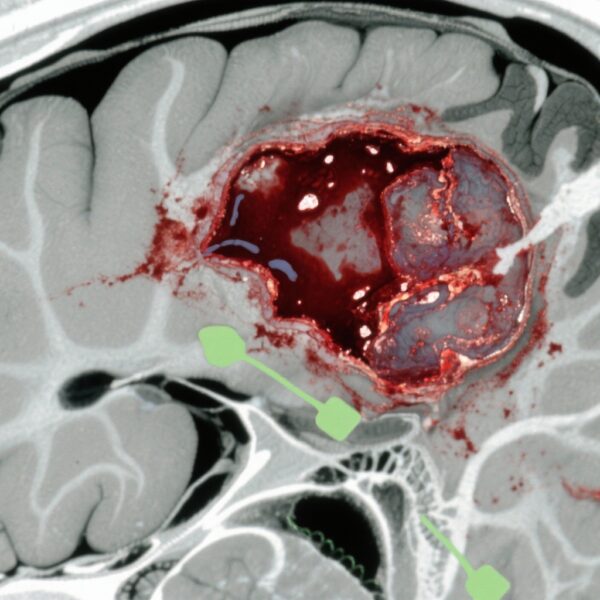Highlight
This comprehensive review consolidates evidence on AI-based diagnostic tools for anogenital skin conditions, particularly sexually transmitted infections (STIs), revealing promising pooled diagnostic accuracy despite heterogeneous study quality and limited clinical validation.
.mpox detection by AI shows highest pooled sensitivity and specificity, followed by genital herpes, warts, psoriasis, and scabies, marking AI’s potential role in sexual health diagnostics.
Current limitations include high risk of bias, reliance on open-source datasets, minimal external validation, and a lack of accessible models for broader evaluation, underscoring the need for rigorous future research.
Study Background and Disease Burden
Sexually transmitted infections (STIs) and anogenital dermatoses represent a substantial global health burden, causing significant morbidity, psychosocial impact, and economic costs. Clinical diagnosis of anogenital conditions often requires expert dermatological or infectious disease assessment, which may not be readily available in all settings, potentially delaying diagnosis and treatment.
Artificial intelligence (AI), particularly deep learning applied to clinical images, has transformed dermatology diagnostics for common skin diseases, but its efficacy and scope in the context of STIs and anogenital dermatoses remain less defined. Given the visual nature of many of these conditions, AI could facilitate faster, more accurate detection, especially in resource-constrained environments.
Study Design
This systematic review and meta-analysis evaluated studies published between January 1, 2010, and April 12, 2024, identified via six major databases including IEEE Xplore, Embase, Scopus, Medline, Web of Science, and CINAHL. The included studies applied AI algorithms to clinical images to detect anogenital skin conditions related to STIs and dermatoses.
Eligible studies used AI-based diagnostic approaches, reported performance metrics such as sensitivity and specificity, and focused on anogenital conditions. Non-AI diagnostic methods, studies without performance data, and nonanogenital dermatologic conditions were excluded.
Data extraction was conducted by two independent reviewers with quality assessed through a modified QUADAS-2 tool and the CLEAR Derm checklist to evaluate methodological rigor and reporting quality. Meta-analyses using bivariate random-effects models were conducted for conditions with at least three qualifying studies to pool sensitivity and specificity estimates.
Key Findings
Out of 5381 screened articles, 140 studies met inclusion criteria. The majority (78.6%) focused on mpox, with smaller subsets addressing genital herpes, genital warts, scabies, molluscum contagiosum, and psoriasis.
Meta-analytic results demonstrated strong AI diagnostic performance across key conditions. Mpox detection displayed a pooled sensitivity of 0.96 (95% CI, 0.93–0.97) and specificity of 0.98 (95% CI, 0.97–0.99). Herpes simplex virus identification showed sensitivity of 0.91 (95% CI, 0.71–0.98) and specificity of 0.97 (95% CI, 0.94–0.98). Genital warts, psoriasis, and scabies yielded sensitivities ranging between 0.87 to 0.90 and specificities around 0.98.
Despite promising accuracy, study quality was variable. High risk of bias was noted mainly in population selection (76.1%) and reference standards (76.1%), reflecting concerns about case representativeness and diagnostic confirmation. A fifth of studies had index test risks of bias.
Most AI models (86.4%) were trained or tested on open-source image datasets, raising potential issues of dataset representativeness for clinical populations. Only 12.1% of studies reported external validation, critical for establishing generalizability. Nearly all studies (99.3%) were limited to proof-of-concept phases, without deployment in real-world clinical settings or public availability of AI models.
Expert Commentary
These findings underscore AI’s significant potential to augment STI and anogenital dermatosis diagnostics, especially where specialist expertise is scarce. High diagnostic metrics suggest AI’s capacity to facilitate early detection and improve case finding.
However, experts caution that current evidence primarily derives from retrospective analyses using curated datasets that may not capture real-world clinical variability. Lack of external and prospective clinical validation limits confidence in AI performance across diverse populations and imaging conditions.
Moreover, the high prevalence of bias risks and dependence on public datasets highlight the need for standardized procedures in data collection, annotation, and algorithm training. Ensuring models are transparent, interpretable, and accessible for external evaluation is essential for clinical integration.
The field would benefit from multicenter, prospective studies involving diverse patient populations, incorporating differential diagnoses and clinical metadata, and assessing AI tools within clinical workflow contexts.
Conclusion
Artificial intelligence demonstrates compelling accuracy for identifying mpox, genital herpes, genital warts, psoriasis, and scabies from anogenital clinical images, indicating a promising adjunct to traditional diagnostic pathways in sexual health.
Nevertheless, substantial research gaps must be addressed prior to clinical implementation. These include improving dataset quality and representativeness, conducting rigorous external validations, transitioning from proof-of-concept to real-world evaluations, and developing transparent, accessible AI tools.
Future efforts should also focus on understudied STIs and anogenital dermatoses, incorporating comprehensive differential diagnoses to enhance diagnostic precision. Integration of AI in routine sexual health practice holds promise for improving early detection, patient outcomes, and healthcare resource utilization when carefully validated and ethically deployed.
References
Soe NN, Kusnandar II, Latt PM, Fairley CK, Chow EPF, Maatouk I, Johnson CC, Shah P, Peters RPH, Subissi L, Zhang L, Ong JJ. Use of AI in Identification of Sexually Transmitted Infections and Anogenital Dermatoses: A Systematic Review and Meta-Analysis. JAMA Netw Open. 2025 Oct 1;8(10):e2533512. doi: 10.1001/jamanetworkopen.2025.33512. PMID: 41042514.
Esteva A, Kuprel B, Novoa RA, et al. Dermatologist-level classification of skin cancer with deep neural networks. Nature. 2017;542(7639):115-118.
World Health Organization. Sexually transmitted infections (STIs). WHO Fact Sheet. 2022.
Rajpurkar P, Hannun AY, Haghpanahi M, Bourn C, Ng AY. Cardiologist-level arrhythmia detection with convolutional neural networks. Nat Med. 2019;25(1):65-69.



